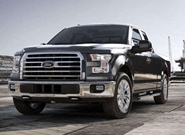Steel Markets

September Auto Sales Fall as Expected
Written by Sandy Williams
October 4, 2018
U.S. automotive sales fell 5.5 percent year-over-year in September. Depending on one’s perspective, they were either good, at a seasonally adjusted annual rate 17.54 million, or a portent of worse times to come.

Vehicles are getting more expensive to build due to metal tariffs and, along with higher interest rates, are pushing prices up. September transaction prices increased an average of 2.0 percent or $700 per vehicle and as much as 4.6 percent in the case of Honda Motors.
Ford Motor Co. announced that metals tariffs will cost the company about $1 billion this year. “The metals tariffs took about $1 billion in profit from us – and the irony is we source most of that in the U.S. today anyways,” said Ford CEO Jim Hackett. “If it goes on longer, there will be more damage.”
Results for September on an annual basis were somewhat skewed due to a surge of sales in September 2017 as buyers replaced vehicles damaged by Hurricane Harvey. Last month’s decline, however, was no surprise to economists.
“Results from August and now September suggest our expectations of a slowing market are correct,” said Cox Automotive economist Charlie Chesbrough. “With more interest rate hikes expected this year, and continued increases in transaction prices, monthly payments are rising and some car buyers are getting squeezed out of the market.”
Jonathan Smoke, chief economist at Cox Automotive, referenced the potential of new auto tariffs: “The new-vehicle market is challenged by affordability, and ironically the most affordable and most popular vehicles are imported and face the threat of new tariffs, which will drive their prices higher.”

Sandy Williams
Read more from Sandy WilliamsLatest in Steel Markets

CRU: Sheet import demand softens as domestic price gains have slowed
US domestic sheet price gains have begun to slow as previously pulled-forward demand has led to a decline in orders.

CMC looks beyond Arizona micro-mill woes to long-term viability of construction mart
Despite the economic and geopolitical upheaval of the last five years, CMC President and CEO Peter Matt points out that the construction market has been an essential element of the way forward.

US importers face stricter rules under revamped S232 tariffs
“CBP expects full compliance from the trade community for accurate reporting and payment of the additional duties. CBP will take enforcement action on non-compliance," the agency said in a March 7 bulletin.

Steel exports rebound in January
US steel exports recovered to a five-month high in January after having fallen to a two-year low in December. This growth follows four consecutive months of declining exports.

Construction spending drops marginally in January
Construction spending edged down slightly in January, slipping for the first time in four months. The US Census Bureau estimated spending at a seasonally adjusted annual rate of $2,196 billion in January, down 0.2% from December’s downward revised rate. The January figure is 3.3% higher than a year ago. January’s result, despite the slight erosion, […]
